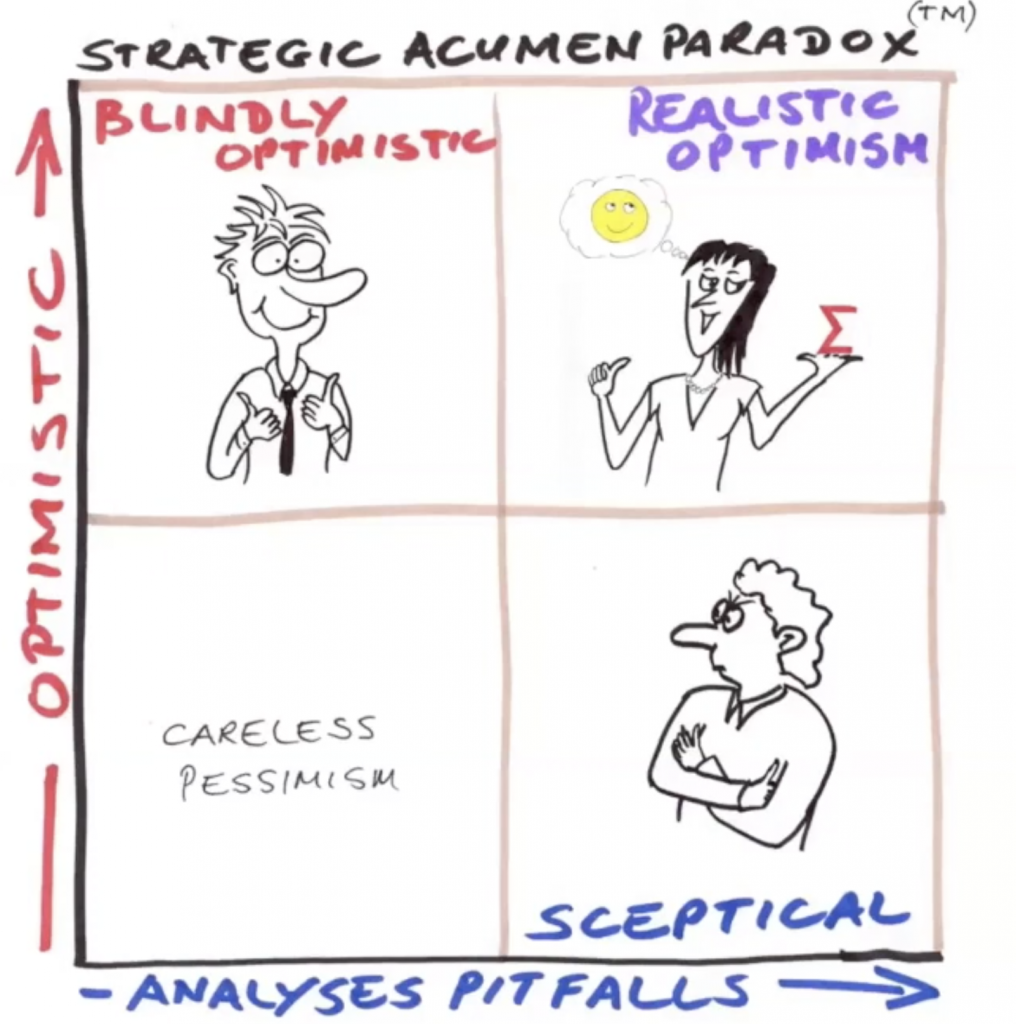Not everyone is capable of being a good leader. Many a time, we see people being thrust into positions of leadership because they were performing well on an individual level, but are not able to keep up with the added responsibility and fizzle out. Other times, they flourish in the given opportunity and are able to help their subordinates perform better as well. What is the difference between the two cases? The strategic acumen of the employee is a big deciding factor in the stability of the leader, long term.
Strategic acumen is based on how an individual approaches a situation if they are optimistic and/or are mindful about the pitfalls. Optimism is the tendency to think that everything will work out and be positive in the end, regardless of the situation. Whereas, analyzing pitfalls makes the individual more prepared for unfortunate outcomes with the use of a plan or strategy.

The issue with being blindly optimistic is that the leader does not employ a safety net incase things don’t go as to plan, which can cause a great deal of uncertainty and impulse decisions for the entire company. On the other hand, by being overly skeptical the leader would never take a leap of faith and would tend to make fearful decisions, which may not be sustainable in the future. Careless pessimism occurs when a leader is highly impulsive and does not have faith that anything good would happen, which is why we might as well do it. The sweet spot would be if the person in charge has realistic optimism, where they know things could go wrong, prepare for it and all the while hope for the best in their situation.
In the following video, Mr. Klaasen explains the four types of leaders with strategic acumen and how each one differentiates from the other. He even gives a case study example of a restauranteur who begins on one side of the spectrum and ends up in the middle, through experience. This may be done by changing the perception of the opposing factor and striking a balance.

